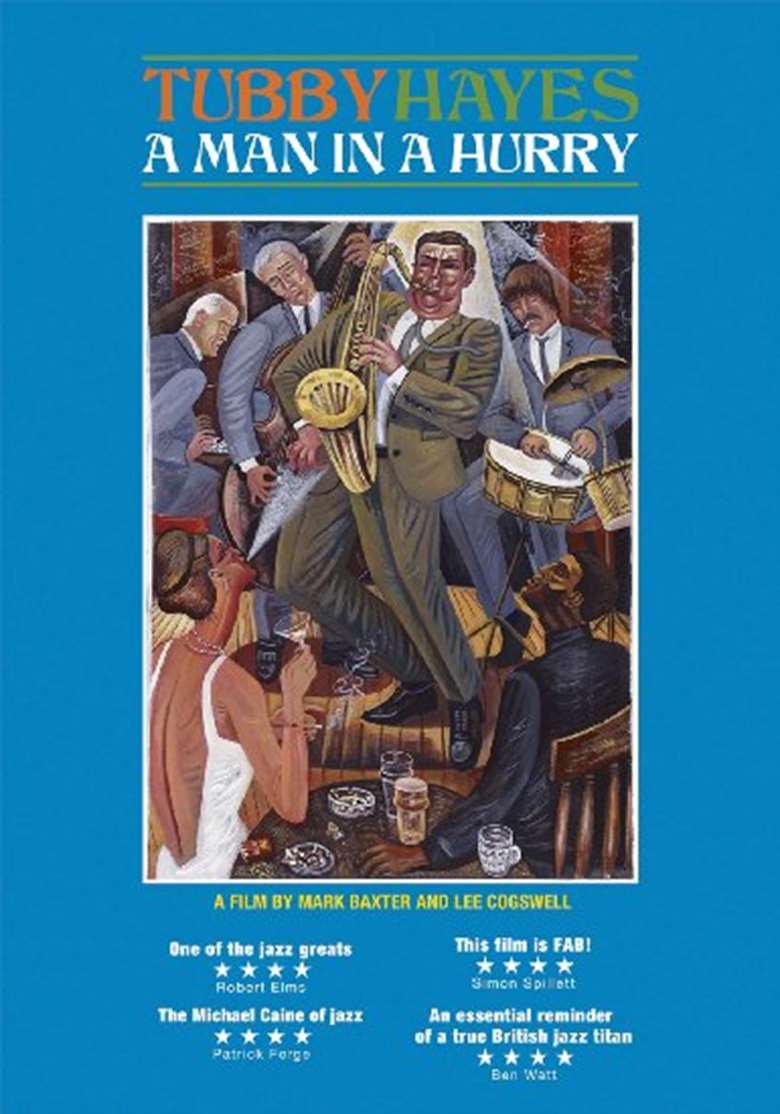Simon Spillett plays up a storm for Foyles launch of Tubby Hayes – A Man in a Hurry
Tuesday, November 24, 2015
Last Thursday saw the launch of the Tubby Hayes documentary, A Man in a Hurry, at Foyle’s bookshop in London as part of the EFG London Jazz Festival.

Fittingly, given the publication earlier this year of his biography of Tubby (The Long Shadow of the Little Giant), it was introduced by Simon Spillett who started the proceedings with his quartet, playing some of Tubby’s compositions. Firing off with ‘Royal Ascot’, he played with remarkable speed, clarity and technique. His powerful approach got the nod from Brian Case, a writer in the audience and well-known for his liking of hard edged tenor players – Dexter Gordon, Johnny Griffin & co – praise indeed.
Pianist John Critchinson and Alec Dankworth on bass ran like a well-oiled engine, putting in good solos and it was appropriate that Spike Wells, who played with Tubby in the late 1960s/early 70s, was on drums. A fine drummer, he plays with great energy and urgency, filling in where necessary and listening to the other musicians with obvious enjoyment. The next number was ‘The Serpent’, in which the tenorist tipped his hat to one of Tubby’s favourites, ‘Parisian Thoroughfare’; then followed the ballad ‘Souriyah’ written by Tubby for his second wife and which he recorded in 1961 soon after the marriage. The set finished with Off the Wagon, a tune dating from the mid-1960s, which Spike had recorded with Tubby’s quartet in 1969.
The second part of the evening was the film itself, a labour of love by Mark Baxter and Lee Cogswell, it shows extensive footage and interviews with a range of musicians and others – Ronnie Scott, Peter Blake, Mike Horovitz, Ray Gelato, Robert Elms and others. There are rare photographs, including the famous one taken by Bruce Fleming of Tubby with Ronnie, Jimmy Deuchar, Chet Baker in shades and in the background, Soho figure Gipsy Larry.
It tells of Tubby’s life, from his upbringing in Raynes Park, the support from his violin-playing father who took him to buy a saxophone, his start as a professional musician at 15, through his quick ascent to jazz stardom, diversification into vibes and flute, associations with Ronnie Scott and his acceptance internationally, as shown by playing at the Half Note in New York and the offer from Art Blakey to join the Messengers. There’s also the playing with Ellington, when he replaced Paul Gonsalves (with whom Tubby had played at the Flamingo back in 1958 and later recorded with in the mid-1960s). The appreciation and recognition is apparent but it’s a warts-and-all account and the drugs issue isn’t glossed over.
Some views and details could be questioned, and there was nothing about the work he did in his last few years with John Stevens, Stan Tracey and Trevor Watts as part of Splinters, but it’s largely a worthwhile and valuable insight into a great player. As Ronnie says right at the start, “Surely one of the most influential and dominating personalities on the British jazz scene.” It’s that time of year when you’re looking for a Christmas present…
– Matthew Wright